After two years without an annual Mezcal Reviews research trip (¡pinche covid!), we finally traveled back to Mexico in May 2022. Our previous trips brought us to Oaxaca – by far the biggest mezcal producing state. After multiple Oaxaca trips, we knew it was time to expand our horizons. Mexico is a huge country with many types of agave spirits and Jalisco seemed like the logical next destination. Tequila time? Not exactly.
Jalisco is not part of the Mezcal Denomination of Origin (DO) which includes nine states (as of this writing). But if you sip as many agave spirits as we do, you know that certified Mezcal™ is just the beginning of agave exploration. Apart from Jalisco’s famed tequila, the state of Jalisco is home to raicilla and a number of other mezcal-adjacent spirits with regional names. In fact, tequila was originally called “vino de mezcal de Tequila”. In the mid-1700s the most popular versions of “mezcal wine” were produced in and around the town of Tequila. Over time, the spirit simply became known as “tequila”. When you hear people say that tequila is a mezcal too, they’re not wrong.
Agave spirits in Jalisco
With a goal to dive into Jalisco’s non-tequila spirits, connecting with the La Venenosa brand was a top priority. Esteban Morales was a name we’d heard many times but we had yet to meet the man himself. We first spoke to Sam, a chemical engineer who works with Esteban. Coincidentally Sam’s family makes raicilla in the western coastal region of Jalisco. A few days before landing in Guadalajara, Sam suggested we join them on a trip up to Zacatecas the day after our arrival. Zacatecas?? Only a few brands were exported from the state of Zacatecas that we knew of and we hadn’t tried many of them. However, there was one brand we were familiar with that was working with some interesting agaves. Well, obviously Esteban was working with that talented producer so we were in luck. The plan was to visit the Bañuelos family, producers of Derrumbes Zacatecas (and Hacienda de Bañuelos), just across the northern border of Jalisco. From Guadalajara, the drive is about 2 hours each way over the mountains. It never occurred to us that a Derrumbes producer was that close to Guadalajara. The state had not been on our radar at all. We were excited by this unique and exciting opportunity.
The Derrumbes brand represents a journey through Mexico, and we were going to experience it firsthand. Way back in 2011, Esteban started the La Venenosa label. A year later, he began exporting Derrumbes Oaxaca (which was 100% Espadin at the time) to Australia.
Soon, Esteban began exporting to Europe, Singapore, and Hong Kong. Even back then, he sensed that the US was too saturated with mezcal brands. He did, of course, eventually export to the United States. The line of mezcals included releases from San Luis Potosí, Michoacán, Durango, and Oaxaca. Years ago, Derrumbes was one of the only brands exposing agaveholics to mezcals outside the state of Oaxaca.
In late-2017, my maguey pareja and I visited Oyamel in Washington DC while on vacation. Traveling, even in the US, always provided an opportunity to discover new mezcals. Apparently not all of the Derrumbes releases had made it to our home state in Texas yet. Sitting on the back bar were 6 different bottles of Derrumbes. I had yet to try the Zacatecas and Tamaulipas releases. In fact, at that point in time I had probably never tried mezcal from either of those states. Sipping generous pours in grappa glasses was quite the experience – these flavors were clearly not your standard Oaxacan Espadin. The Tamaulipas release even had an agave species called Funkiana!
View this post on Instagram
Fast-forward to 2022 and Derrumbes is exported all over the world. The distinct bottle design hasn’t changed. Recently, a seventh release has been added to the lineup, this time from Guerrero.
The evolution of Esteban Morales and Casa Endemica
We arrived at the Casa Endemica office early on a Monday morning. Sam greeted us and a few minutes later we met Esteban for the first time. As we made introductions we were soon distracted by the enormous bar behind our hosts. It was barely nine in the morning but we couldn’t take our eyes off it. Esteban explained that it was for research and exploration. This was our kind of “research center.” The bar had everything you might expect and more including mixto tequila, rum, and rare indigenous spirits distilled in the deep forests of Jalisco.
The connection between La Venenosa and Mezcal Derrumbes is not obvious but it makes sense after learning about Esteban. Growing up, Esteban considered being a lawyer. But his mother suggested he join his friends in London before deciding on his next steps. Overseas, he grew to enjoy the heat and aggressive energy inside busy kitchens. From London he traveled all over Europe and onward to places including India, Nepal, Indonesia, and Thailand.
Upon returning to Mexico, he felt disappointed that he hadn’t explored much of his own country. He then began traveling around Mexico, working as a chef, while discovering different flavors throughout the country… his country. While traveling, he often encountered agave spirits. This bar was an extension of his never-ending flavor journey. And the spirits he bottles today are an effort to share that flavor diversity with the world.
The dots began to connect. Esteban’s company, Casa Endemica, was the parent company to a number of Mexican spirit brands, including:
As we shifted focus away from the bar to the bottling area, Esteban told us more about Casa Endemica. By centralizing his bottling and packaging in Guadalajara, he is able to create customized pallets with a mix of the brands. Additionally, he exports Mezcaloteca and Caballito Cerrero to Europe using the same “pallet ensamble” strategy.
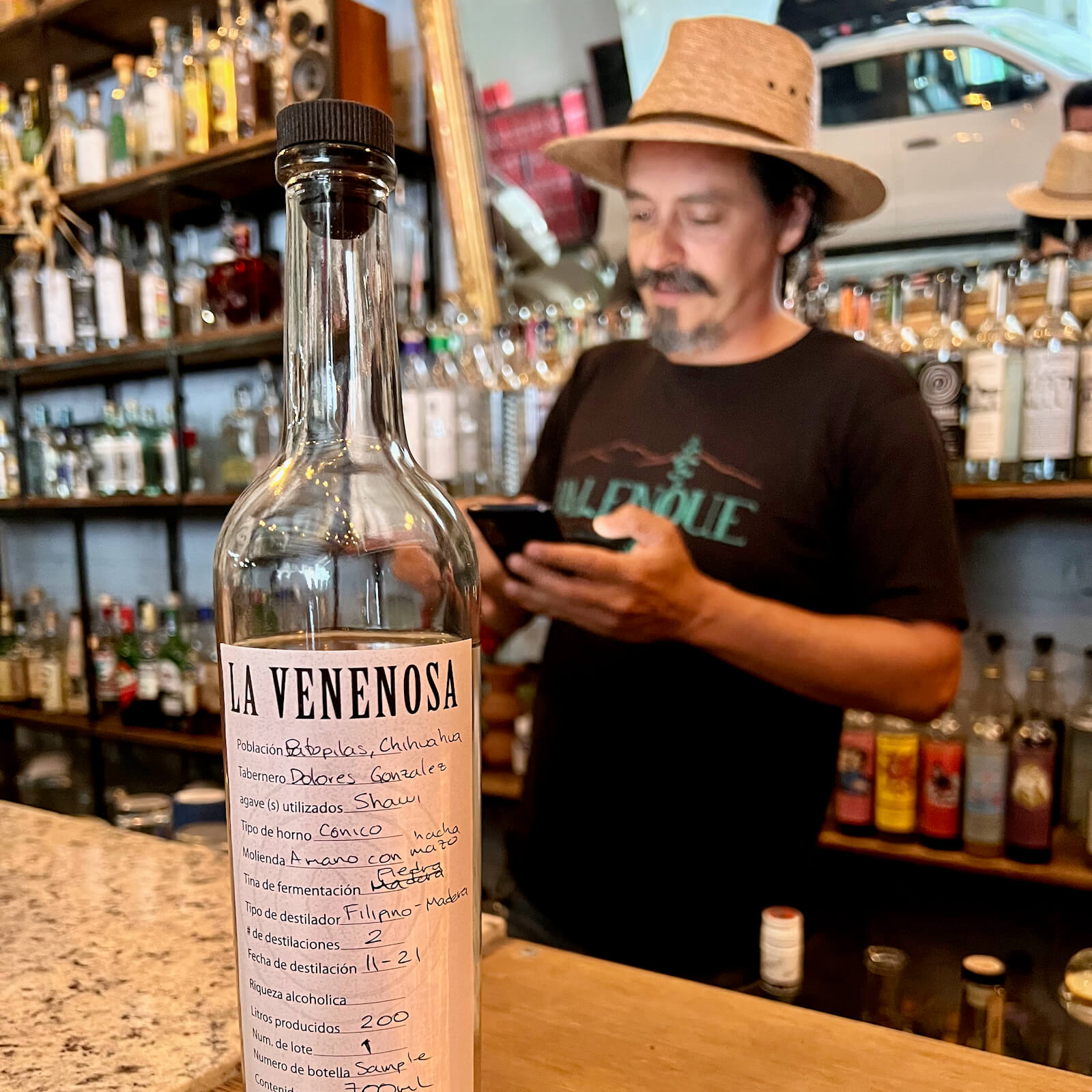
A rare bottle of La Venenosa with Esteban in the background
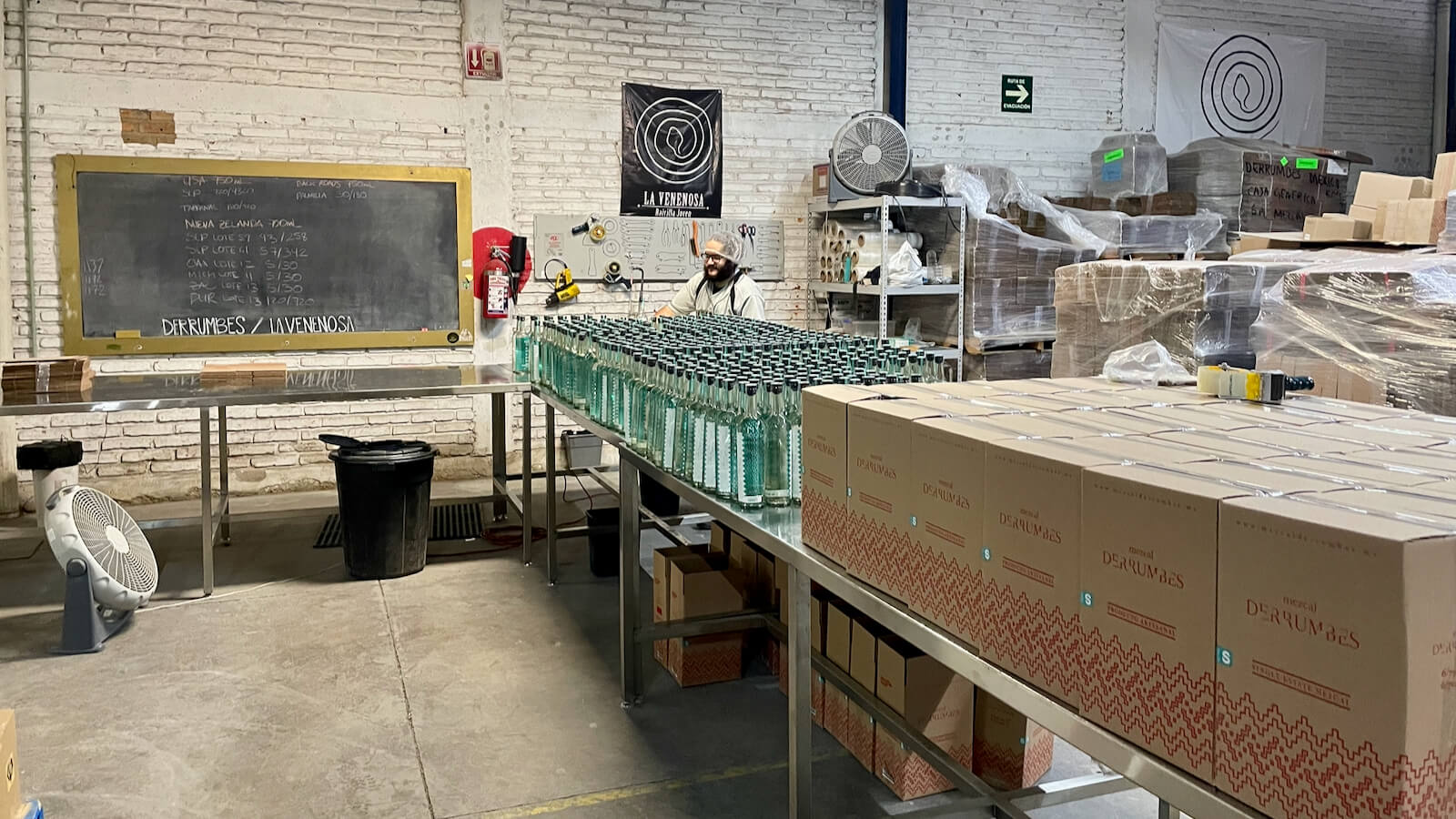
Bottles of Derrumbes San Luis Potosí bottled for export
We stood in front of a bottling line where a few members of his team packaged bottles of Derrumbes San Luis Potosí. I mentioned how the price point of the SLP release was so competitive that bartenders in Austin had used it in cocktails. He told us that some of the Derrumbes releases were loss leaders in certains markets. This was the case for SLP in the US and Derrumbes Durango in Europe. This was a way to get into the door and allow customers to try the expressions when price might be a barrier. After seeing bottles from Casa Endemica at bars all over the world, it was impressive to see the heart of the operation.
Is the mezcal industry really doing that well?
We walked back toward the front of the modest-size warehouse. Esteban posed a question to us: Is the mezcal industry really doing that well? According to COMERCAM data, more than 90% of certified mezcal produced in 2020 was from the state of Oaxaca. It was important for Esteban to support producers outside of Oaxaca. He argued that working in other states offset some of the environmental stress placed on Oaxaca. That was an insightful and somewhat obvious fact we hadn’t considered before.
A trip to Zacatecas
It was almost time to hit the road. We were told there would be a few other gringos joining us for the trip. As we waited, we tried a delicious Palmilla (made from Dasylirion like Sotol) under the Yoowe label. We had taken it easy the night before and thus were clear, alert, and full of energy. As our travel companions arrived, it was clear they had done extensive agave research the prior night. We were in for a fun day with our fellow gringo agaveheads. Joe ran the agave joint Rita’s in Breckenridge, Colorado; he was accompanied by a loyal and equally awake compadre. They joined us for a quick sip to shake it off, shake it off.. before we made moves.
A cooler of beers and Electrolit was loaded into the van. We drove north out of the city and Joe told us about an exclusive batch of Vago that had just arrived at his agave bar. He was familiar with Mezcal Reviews and we were humbled to hear he found the website useful. He also asked us why we didn’t have an app.. well, obviously we were too busy drinking in Mexico to build an app! The ride had its share of interesting moments. If you’re ever driving between Guadalajara and the Zacatecas border, let’s just say the local police don’t like it when gringos use the side of the road as a urinal.

Looking north towards Zacatecas
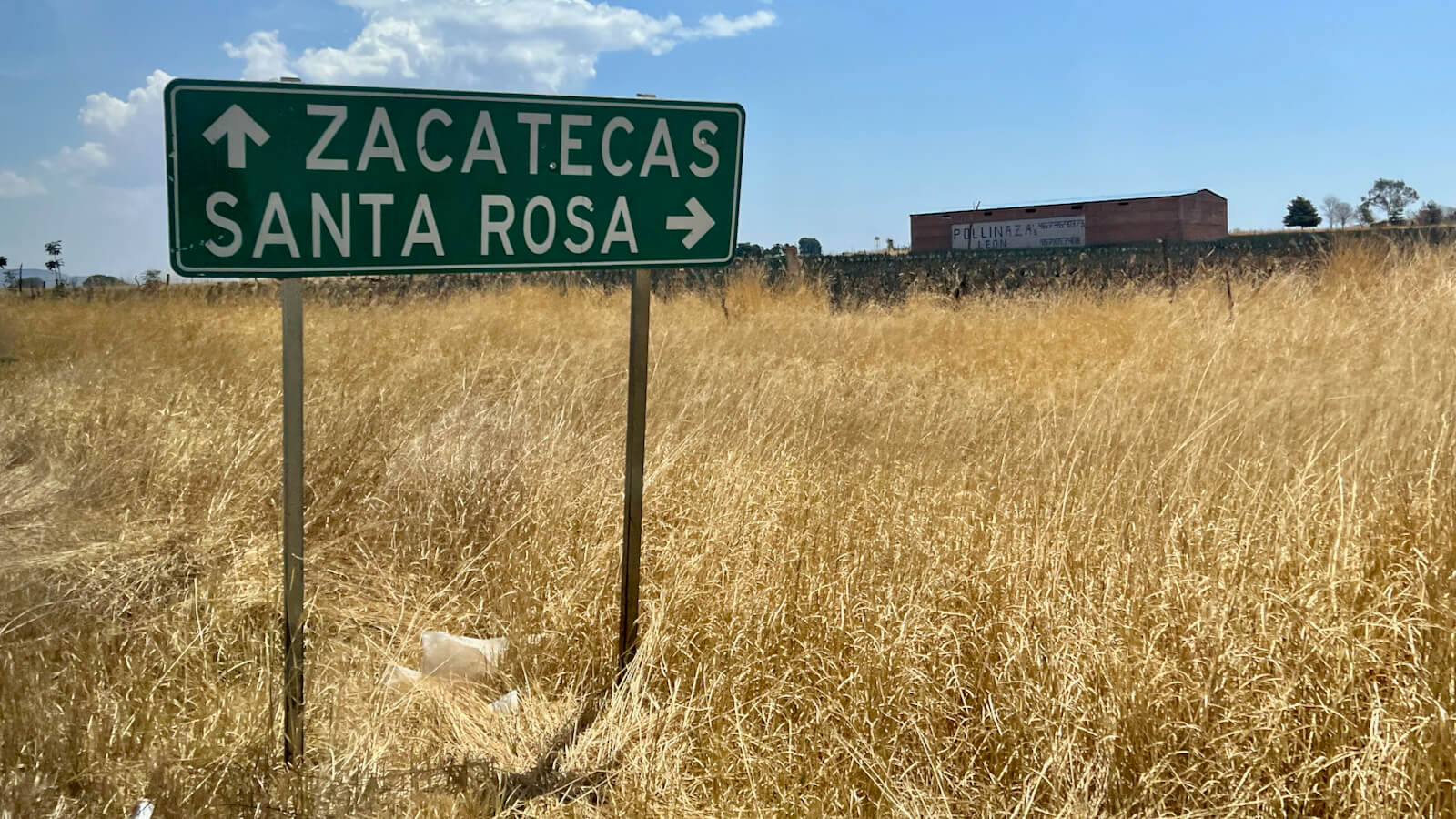
Driving north to the state of Zacatecas
As we crossed the border into Zacatecas we entered a mezcal state. Seconds earlier we were in the tequila state. The invisible lines between states had a profound effect on the Bañuelos family which has been producing agave spirits since 1915. Before the 1994 tequila DO, the family had been producing tequila for a large brand. Afterwards, they were cut off from using the tequila name. Their only choice was to start labeling their product as mezcal. Throughout the transition, not much about their process changed.
Arriving at the taberna
The Bañuelos family taberna (distillery) is just 10 kilometers from the Jalisco border. Jaime Bañuelos, a third generation tabernero, is the patriarch of the family. His two sons, Fortino and Francisco, currently run the day-to-day operations of the taberna. Upon arrival, we were warmly greeted by Don Jaime and Francisco. The taberna was an interesting contrast to small mezcal palenques we had visited in the past. We parked next to an autoclave (pressure cooker) which was twice the length of our van. This production facility was massive in comparison to Oaxacan mezcal palenques yet still a tiny operation compared to Big Tequila.
Nearby was a massive pile of young unrooted blue agave hijuelos. Agaves are such magical plants, these “pups” can sit out in the sun for well over a month and be replanted later. They will grow up into sugar filled agaves as if nothing happened.
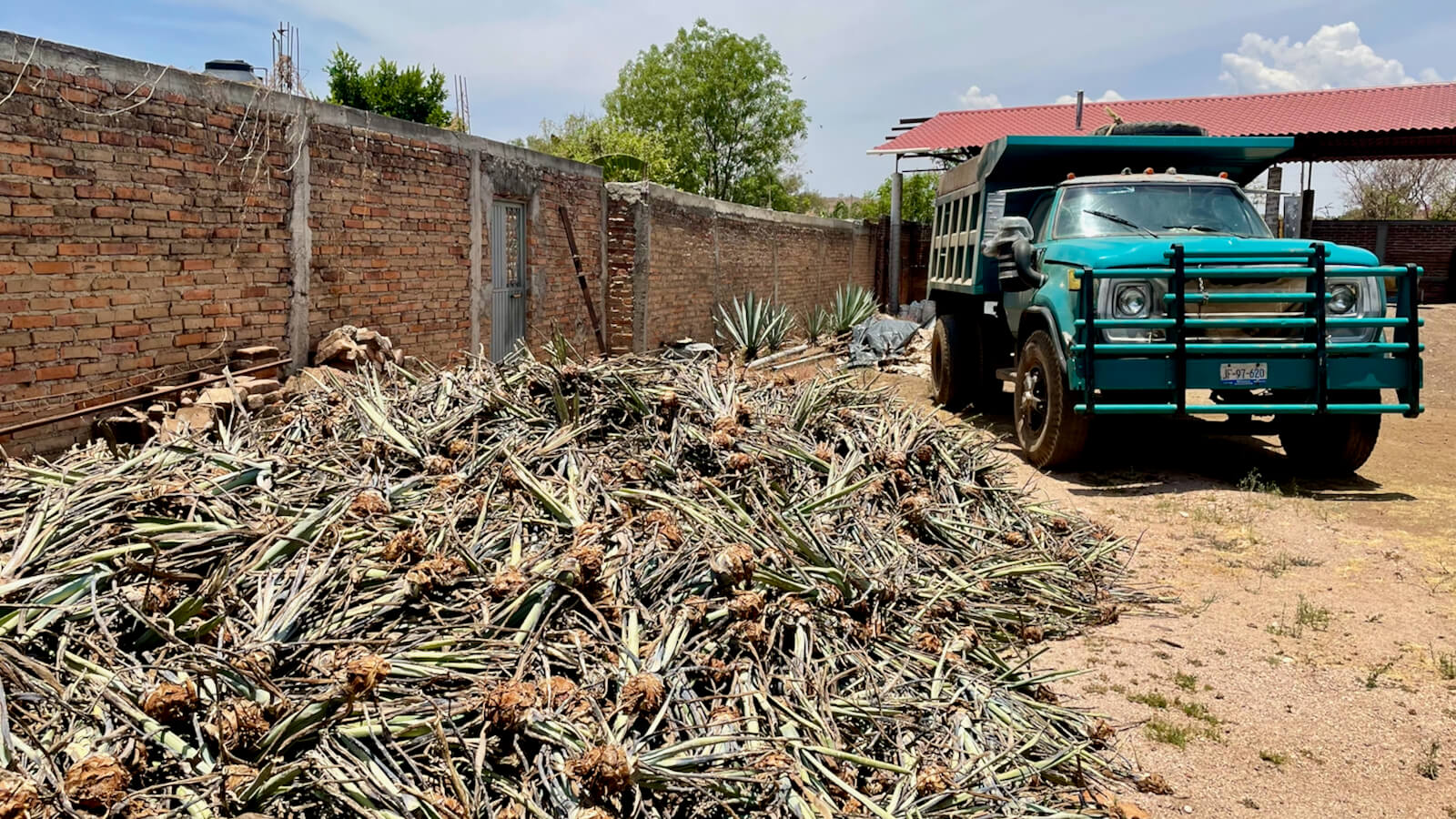
Little agaves ready to be replanted.. the truck can haul large harvested agave piñas.
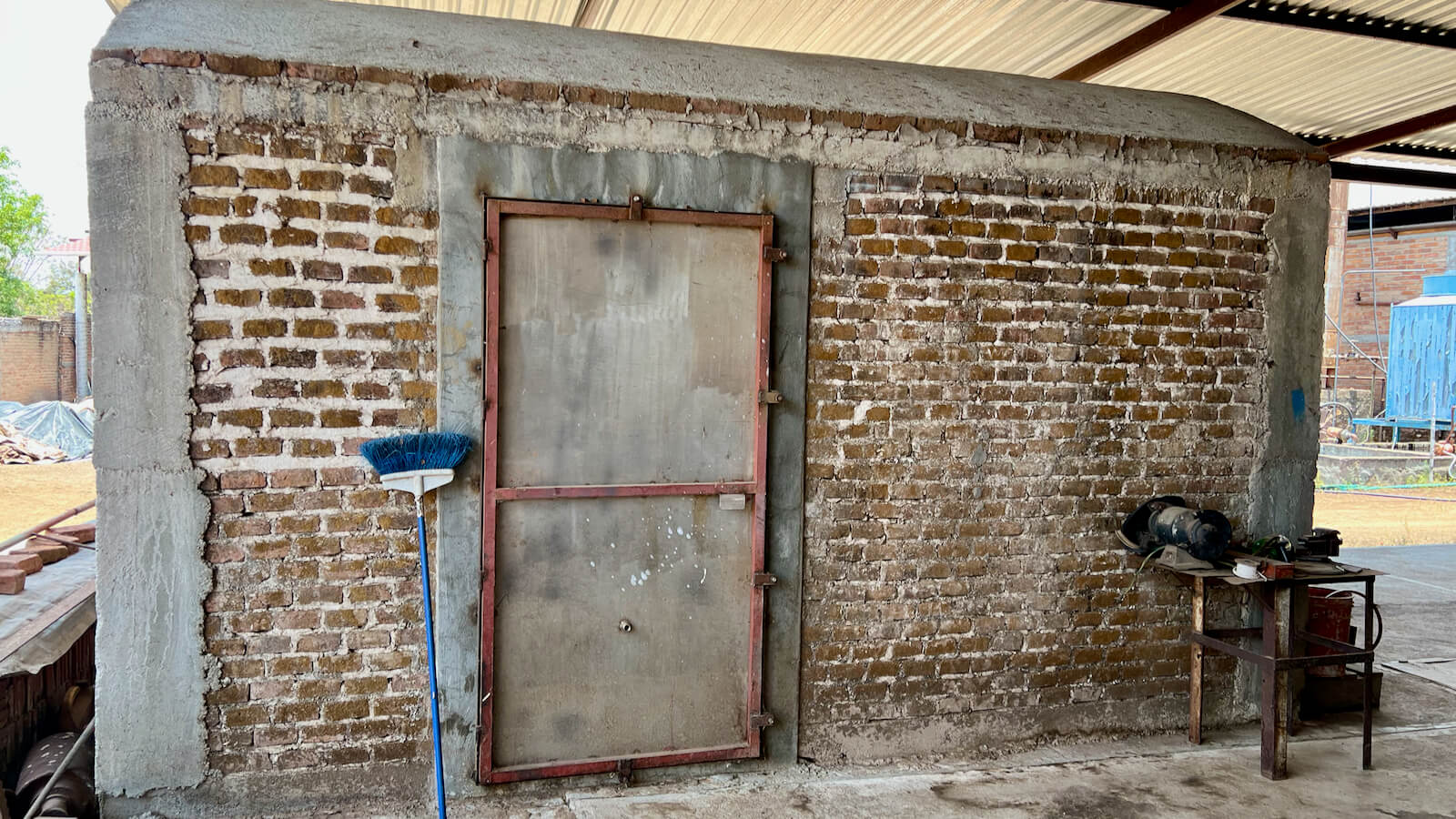
The brick oven: it’s getting hot in here, so take off all your pencas.
The taberna and main production area was enclosed within 12 foot high brick walls. Don Jaime guided us into a covered area of the taberna and showed us the brick oven. Made of brick and cement, the oven could easily fit a full-size pickup truck. A conveyor belt shredder was a few yards away. The machine looked over 30 years old, like an old car which keeps running so long as it is properly oiled and maintained. They don’t make ‘em like they used to!
We stepped out into the sun and walked towards the roasting pit, an alternative cooking method to the brick oven. This underground oven was a cylindrical shape like a soda can. Mezcal cooking pits typically have a conical shape like the top half of a waffle ice cream cone. We were told that this cylindrical shaped oven generates more heat and less smoke. Beyond the pit, against the far wall of the enclosed taberna was the distilling area. A few wooden tinas (fermentation vats) were set against the wall next to the still.
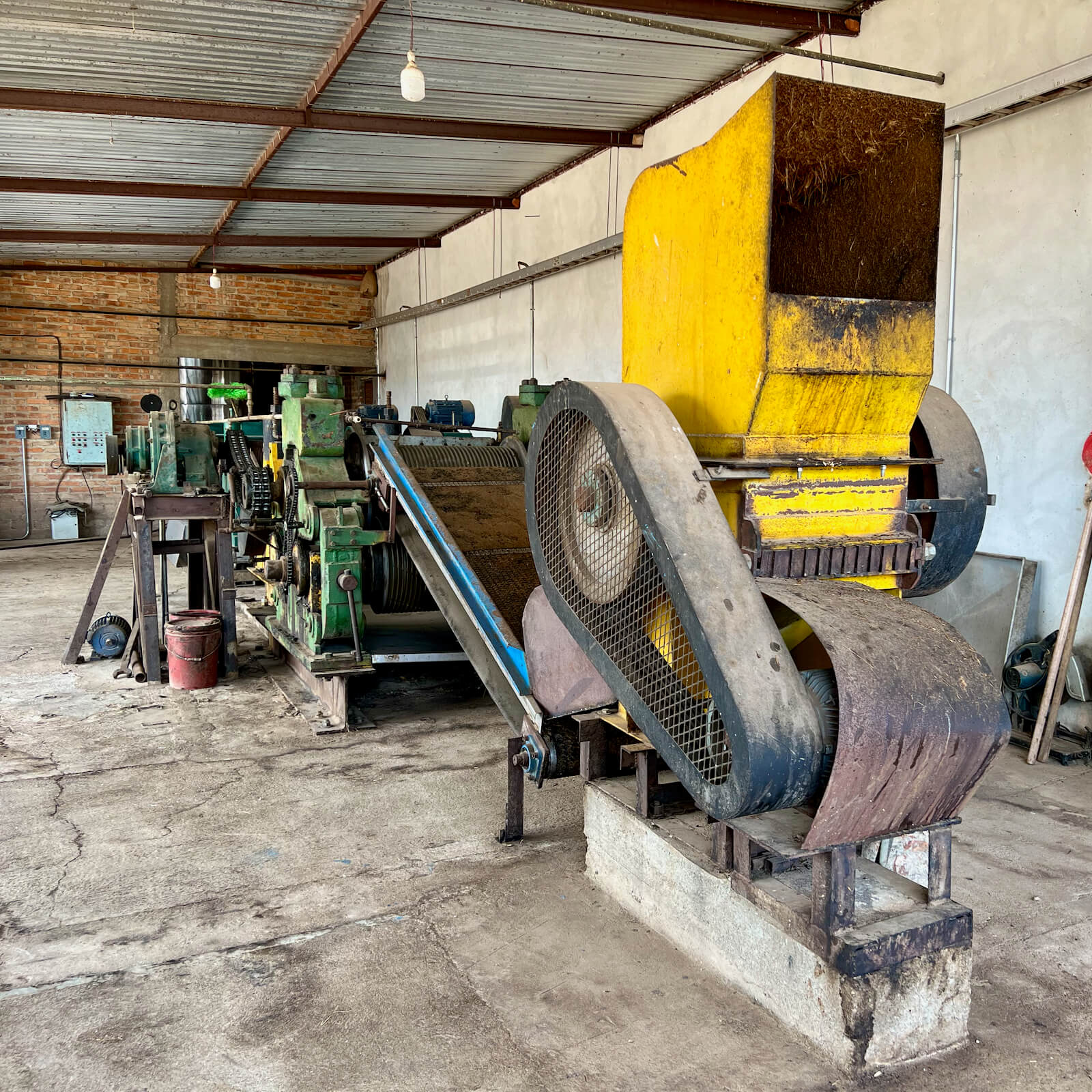
An efficient way to mash mucho maguey
More than Blue Agave
The stainless steel still (say that three times fast!) held 1,000 liters. The bottom part, integrated with the oven, was insulated with bricks. The pipe leading from the still to the condenser towered high above us. That day, the pipe carried newly distilled Masparillo over our heads, easily 15 feet high, before descending into the condenser. Masparillo is a rare agave that grows wild on hills of the Bañuelos property. The wild Masparillo agave plants are short and squat. Unlike Masparillo mezcals from Durango which are usually agave Maximiliana, the Bañuelos family harvests Agave guadalajarana, which is endemic to Jalisco and parts of Zacatecas.
The family primarily works with three types of agaves: Masparillo, Tepemete, and Azul. The name Tepemete is derived from indiginous languages of the regions: Tepe (soil) and Metl (agave). Masparillo had different pronunciations over time. The name indicated it was a small agave and earlier “mal” which referred to the bad soil in which it was able to survive. Lastly, Azul is obviously the most well known agave on earth thanks to world-famous Tequila.
The day we visited, the still was loaded with 800 liters. They told us the batch had been fermented for 17 days which seemed like a long time. We sipped the second run right off the still. It was rustic, yet refined.. Representing a confluence of flavors produced from the pairing of wild agave and modern distilling technology. The family often puts the puntas and colas (heads and tails) of the distillate back into the still to yield more cuerpo (body). As we sipped and talked, Don Jaime used a hydrometer to determine when to separate out the different cuts of the distillation.
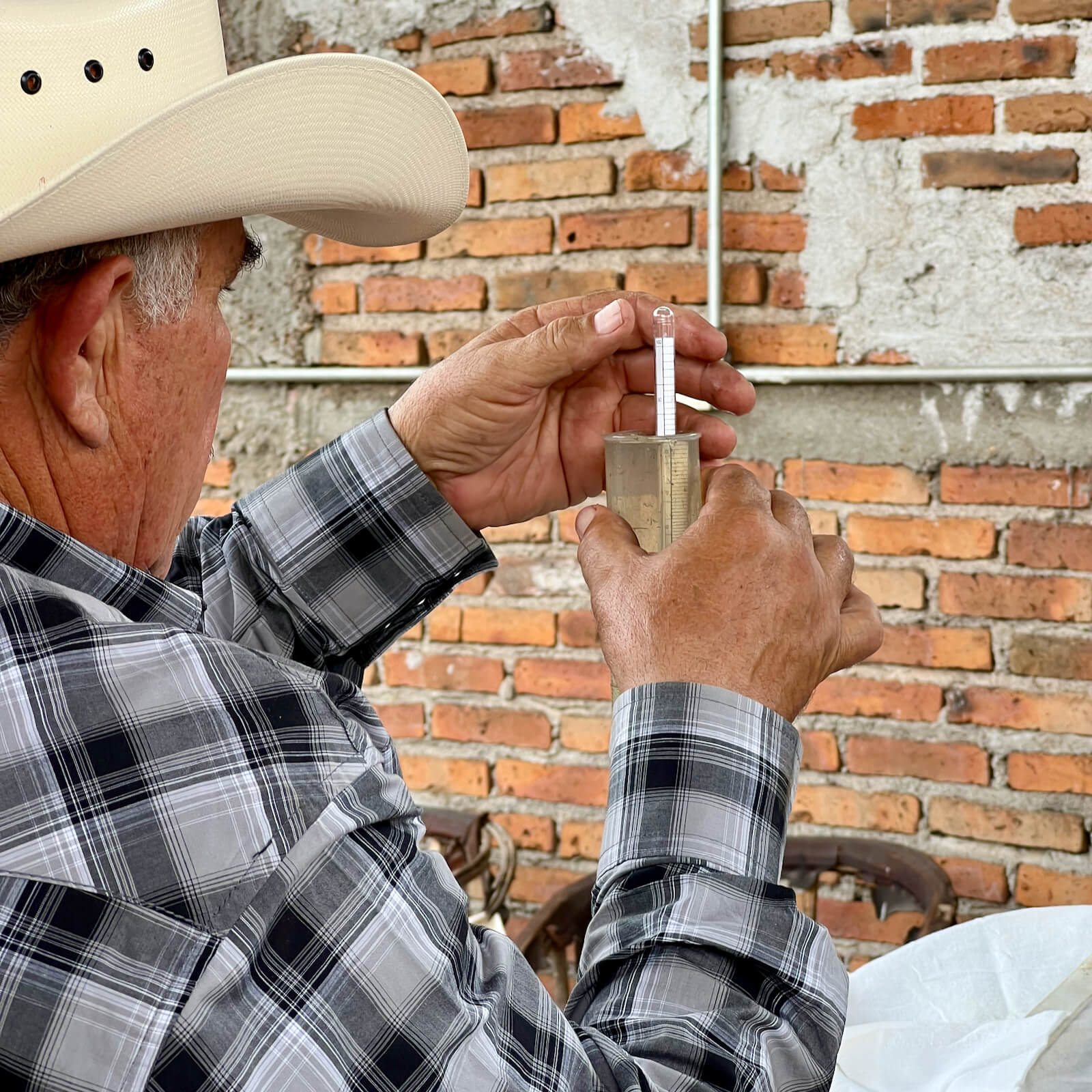
Don Jaime uses a hydrometer to measure the alcohol content of the mezcal off the still
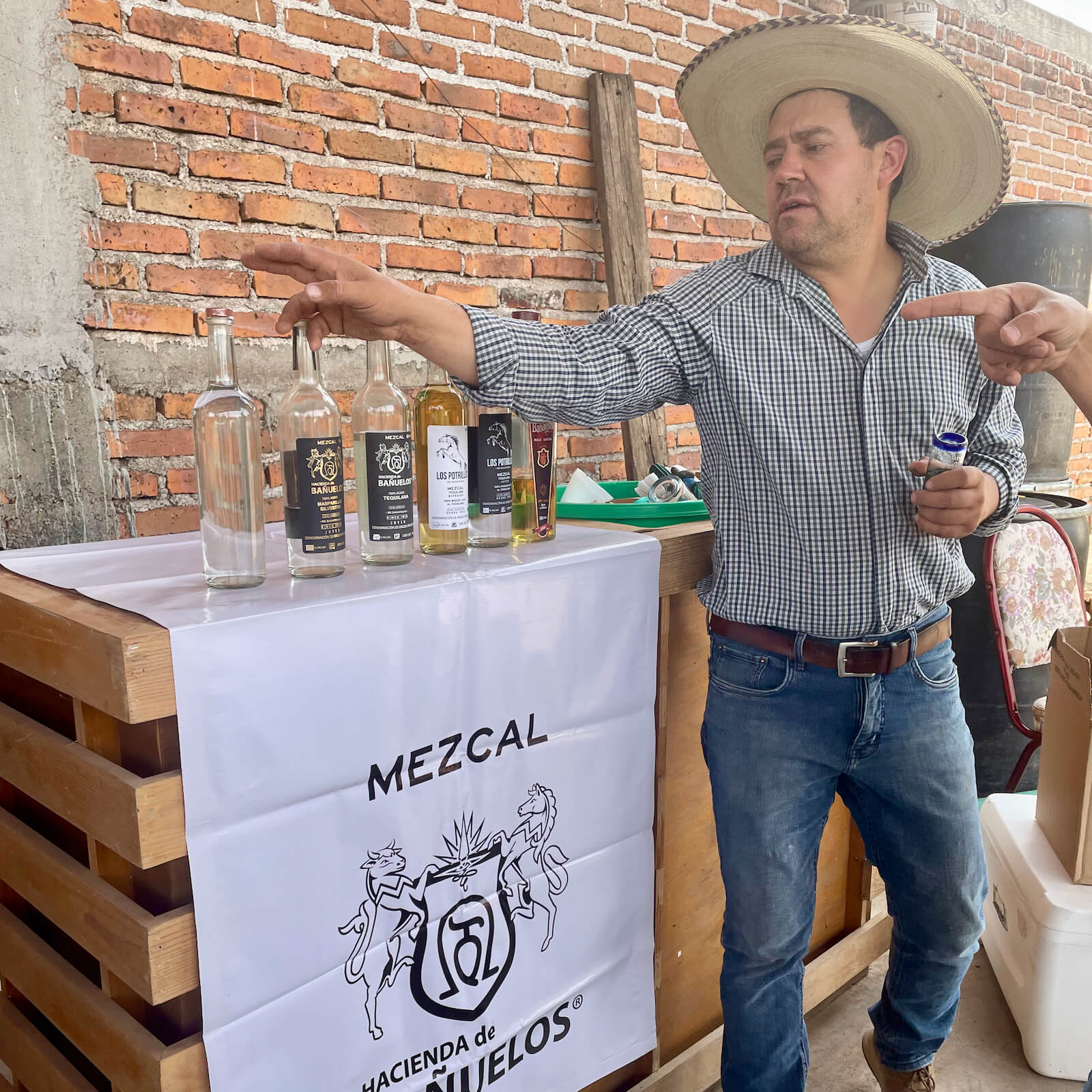
Francisco Bañuelos presents the different bottles produced by the family
Next, we sat down for a meal which was easily one of the best during our entire trip. It consisted of fresh tortillas, fresh verde and rojo salas, and a large pot of cooked meat with other ingredients. There was pork, egg, spices, and a few other ingredients. Either way, it was absolutely incredible… full disclosure: we were relatively sober at the time so this isn’t an exaggeration. After eating and sipping more mezcal, we walked through the storage area. Standing there, we gazed upon a room of storage containers. We were told the family had thousands of liters of unadjusted Agave tequiliana mezcal. Its future was TBD but quantity seemed like a prime opportunity for an interesting project.
As we had our final sips, we unanimously chose the Masparillo as our favorite that day. It was unique, rustic, and completely different than a Oaxacan mezcal or a blue agave tequila. The Bañuelos family was generous with their time, food, and mezcal. We said our goodbyes and piled back into the van. Within a few minutes, we crossed back into Tequilaland – the state of Jalisco.
Sharing Zacatecas with the world
Esteban collaborates with the Bañuelos family on Derrumbes Zacatecas which is produced using mostly traditional mezcal methods. It is pit roasted in the underground oven shown in the photos above. Normally it is crushed using a tahona, however as of this writing the tahona was being repaired and the cooked agaves are crushed using the mechanical mill. The Hacienda de Bañuelos Tequilana is steam cooked. The family also produces the Los Potrillos brand; they don’t sell under that label in the US (unconfirmed but likely due to a copyright issue).
The Bañuelos taberna was a an interesting hybrid of a mezcal palenque and a tequila fabrica. It is an “agave kitchen” where the family produces mezcals using a variety of methods. The fact they were only 10 kilometers from Jalisco made it that more fascinating. There are different reasons an agave spirit might be ineligible for the official label of Tequila: geography, certification, production process, etc. It reminded me of an article by Clayton Szczech: My New Favorite Tequila – That Isn’t a Tequila. Clayton, a tequila specialist and educator, discusses how traditional “tequila” cannot be tequila for various reasons and how some of these spirits are absolutely incredible (the Bañuelos family is also briefly mentioned in the article). The rules of official Tequila have changed before, and they will likely change again.. what will the future hold? Perhaps they will be producing tequila again one day?
We think Esteban did an incredible job sourcing mezcal outside of Oaxaca by highlighting the mezcal of Zacatecas. As we crossed over the mountains, the lights Guadalajara appeared before us in the distance. Esteban turned around to our group sitting in back of the van, “Want to visit a Raicilla producer tomorrow?” Stay tuned for our next blog where we visit Don Luis Contreras and see the source of the famous Raicilla Sierra del Tigre.
To learn more about the Bañuelos family, watch this short video from Derrumbes Zacatecas
We also encourage you to listen to the Show de Vie podcast Ep 247 – Esteban Morales Garibi: A Bridge Between the Past and the Present for additional background information about Esteban. We used parts of that interview for this article and thank Mike G for his excellent interview.


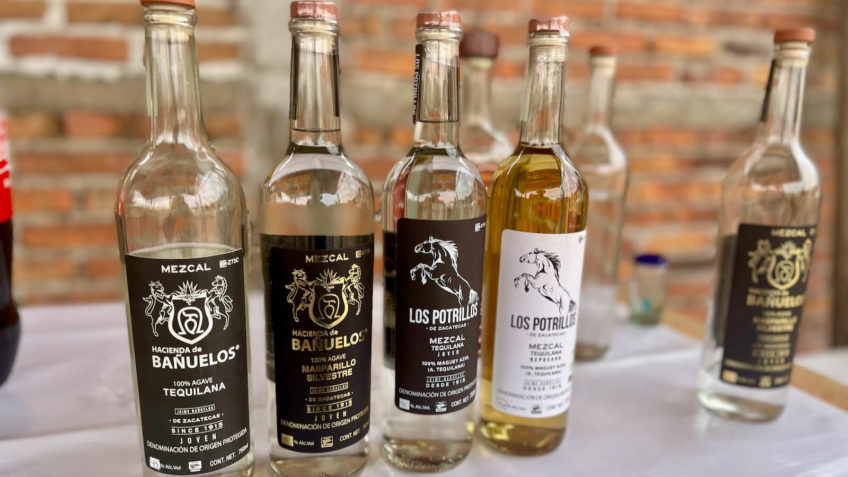
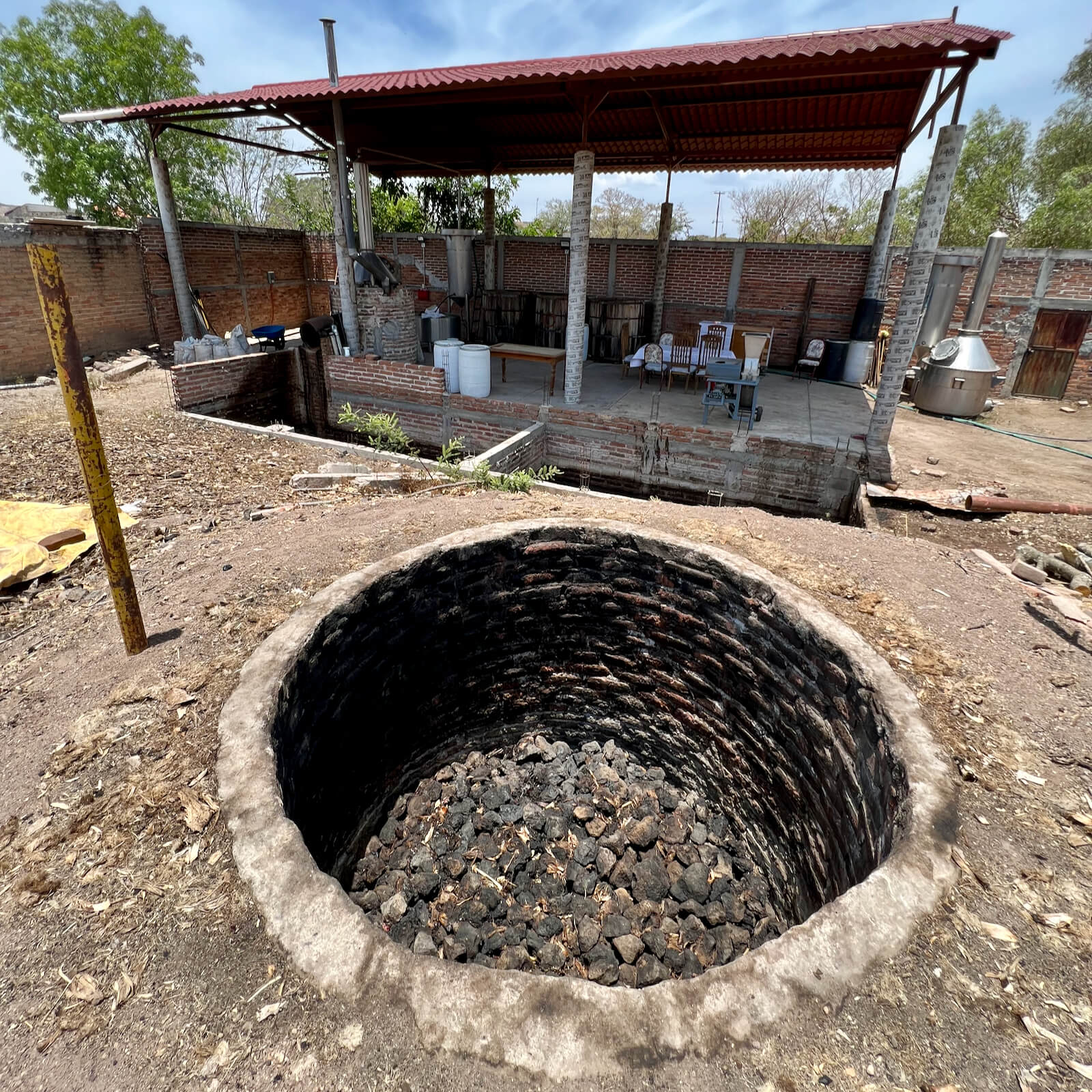
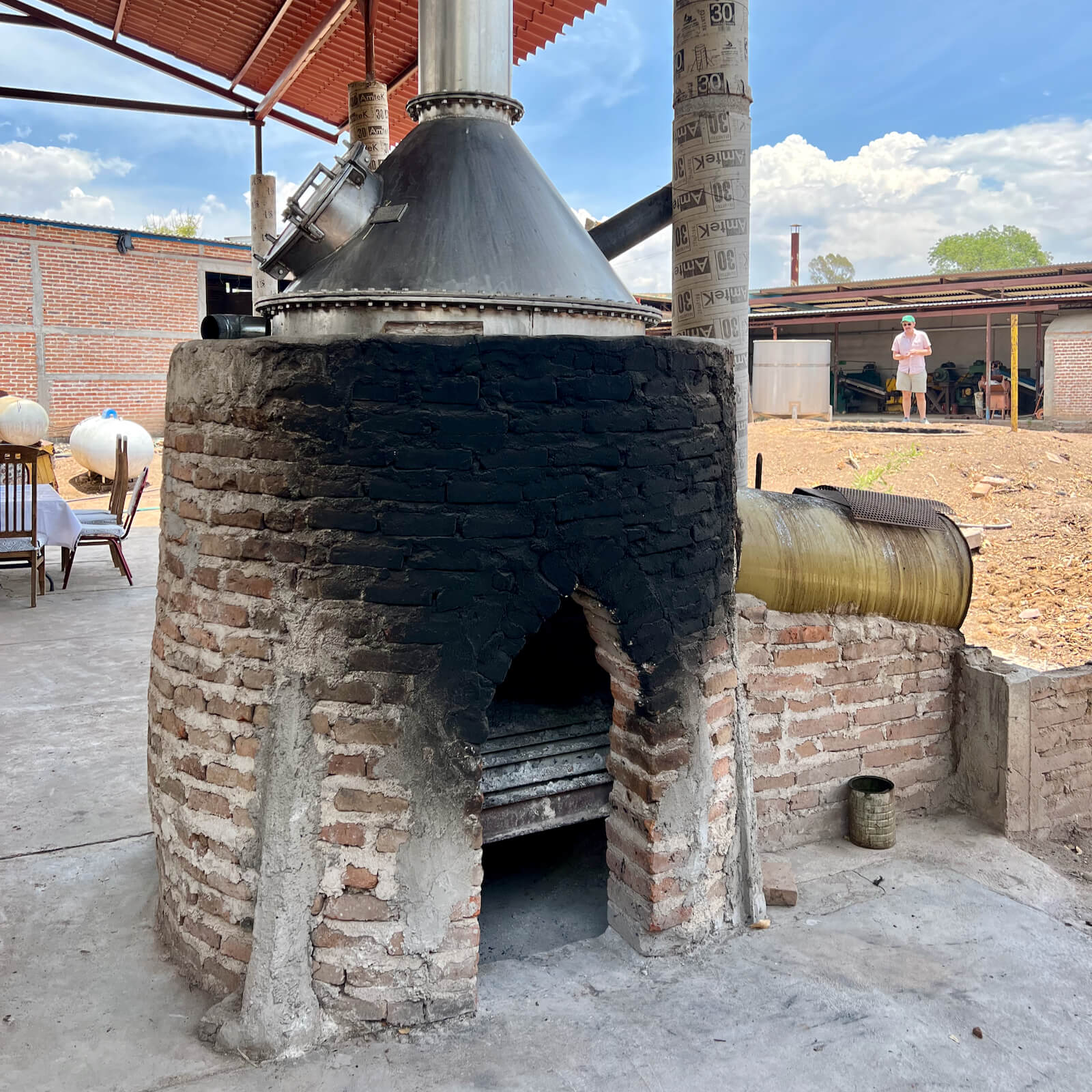


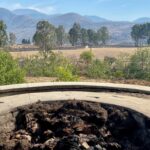
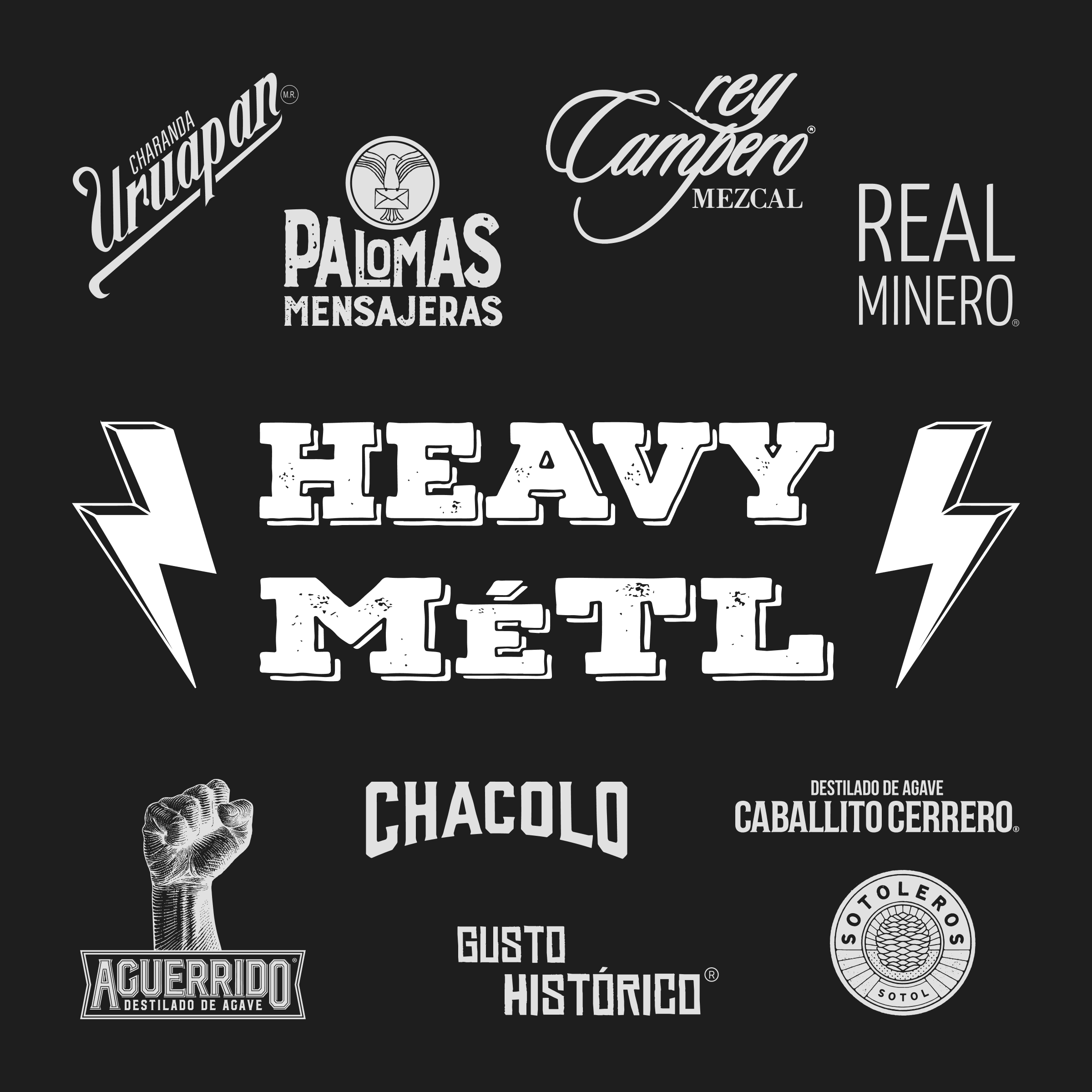
Emmalee Hicks
2 years agoThank you for sharing this story. I just purchased a bottle of Derrumbes Zacatecas in New Zealand and wanted to learn more about it. I am knowledgeable enough to understand what I was purchasing, but your insights from this experience really bring my appreciation to a higher level.
TylerAuthor
2 years agoGreat to hear that Emmalee – cheers!